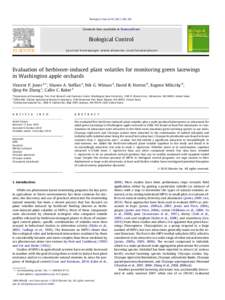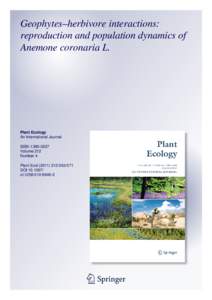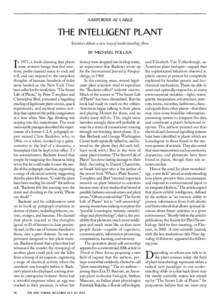 Date: 2011-05-18 13:34:20Antipredator adaptations Predation Camouflage Mimicry Warning coloration Caterpillar Plant defense against herbivory Herbivore Crypsis Butterfly Aposematism Adaptive Coloration in Animals | |  Hypothesis Plant coloration undermines herbivorous insect camouflage Simcha Lev-Yadun,1* Amots Dafni,2 Moshe A. Flaishman,3 Moshe Inbar,1 Ido Izhaki,1 Gadi Katzir,1 and Gidi Ne’eman1 Hypothesis Plant coloration undermines herbivorous insect camouflage Simcha Lev-Yadun,1* Amots Dafni,2 Moshe A. Flaishman,3 Moshe Inbar,1 Ido Izhaki,1 Gadi Katzir,1 and Gidi Ne’eman1
Add to Reading ListSource URL: research.haifa.ac.ilDownload Document from Source Website File Size: 204,63 KBShare Document on Facebook
|






 Hypothesis Plant coloration undermines herbivorous insect camouflage Simcha Lev-Yadun,1* Amots Dafni,2 Moshe A. Flaishman,3 Moshe Inbar,1 Ido Izhaki,1 Gadi Katzir,1 and Gidi Ne’eman1
Hypothesis Plant coloration undermines herbivorous insect camouflage Simcha Lev-Yadun,1* Amots Dafni,2 Moshe A. Flaishman,3 Moshe Inbar,1 Ido Izhaki,1 Gadi Katzir,1 and Gidi Ne’eman1